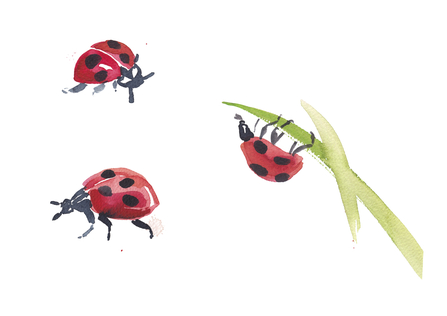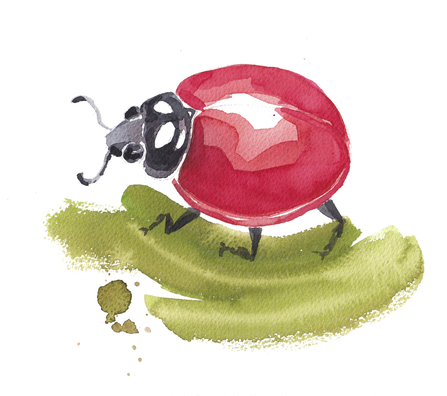When I started painting, I thought it would keep me desk-bound. However, it led me outside to explore and appreciate nature and wildlife. Field trips make all the difference in my creative practice. Walking in nature provides creative inspiration, a break from the desk, and a sense of calm. Observing the natural world fosters a connection and care for it, motivating efforts to reduce human impact on wildlife.
Capture wildlife in watercolour with Inga Buividavice
Painted by Inga Buividavice

Painted by Inga Buividavice
Now I am sharing my TOP 5 tips to prepare for drawing or painting animals:
1. Go out and about: The best way to find inspiration is to spend time in nature and observe the animals around you. While I often visit safari parks, encountering animals in the wild is even more fascinating. Capturing wildlife can be challenging, but parks and nature preserves are great places to find subjects for your paintings. These areas are easily accessible and the animals are often accustomed to people, including squirrels, robins, blackbirds, and ducks. When you see an animal, take a close look. Observing animals in their natural habitats helps create authentic paintings. Study their shapes, textures, and behaviours. There is no such thing as a 'boring' animal; every creature has unique features you can transfer onto paper.
2. Take lots of photos: Photos provide reference material for your paintings. Even the most accustomed-to-humans animals are cautious and will try to hide as soon as you approach them, so they will never pose for you while you try to get a sketch down! I always try to sit down and wait until animals or birds feel comfortable coming closer to me. Then, I take lots of photos from different angles and distances, so I have a good range of references to choose from. Later, when developing my sketches, I use several photos for one sketch—one for the face, one for the body, and a close-up photo for the eye.
3. Pay attention to distinctive features: Like any painting subject, even complex animal consists of primary shapes. The key is to simplify your subject while keeping the proportions and distinguishing features. Identify what makes a sheep look like a sheep.

Painted by Inga Buividavice
4. Do lots of sketches: Practice with quick sketches to capture the character of animals. This helps you improve your skills without overthinking. First sketches always feel a bit stiff, but you will notice how your hand relaxes and you feel more confident with each sketch.
5. Always experiment and have fun: Express your personal view and connection to wildlife. Use colours you love or imagine rather than sticking to realistic ones. It’s not about mimicking reality; it’s about expressing your personal point of view and connection to the wildlife. When you making process fun it’s easier to improve, but also it’s all about having good time.

